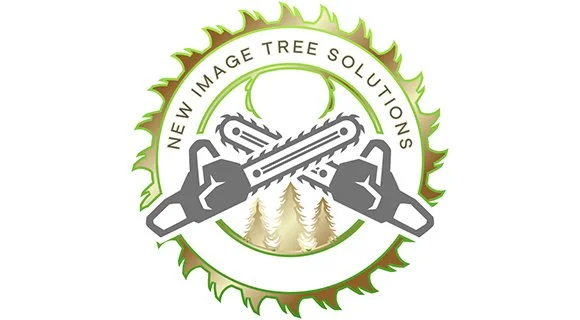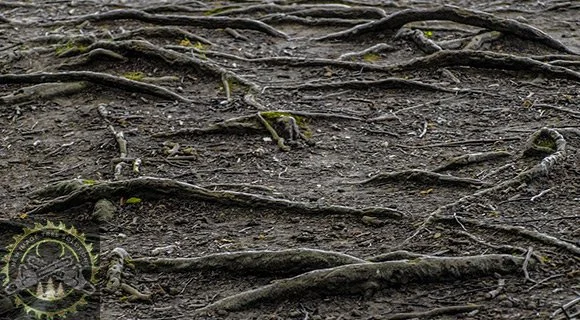Tree Roots are Breaking My Concrete Driveway
Are you frustrated with your trees buckling your concrete driveway and hardscape? Knowing how tree roots grow and how they can be invasive will guide you when planting and growing them.
New Image Tree Solutions gathered information on diagnosing and mitigating tree root issues that lead to breaking, cracking, warping, or buckling concrete surfaces.
How Tree Roots Damage Concrete
Tree roots constantly search for water and nutrients. They spread deep or shallow, often extending far from the trunk. When roots travel near ground level, they can infiltrate spaces beneath asphalt, sidewalks, and driveways. As these roots naturally expand and thicken, they displace surrounding materials. The potential energy built in the root mass eventually finds an escape route upward. This results in the breaking, cracking, warping, or buckling of any structure resting above them.
Invasive Tree Species in Roswell, Georgia
Certain tree species are notorious for their aggressive root systems. In Roswell, five species with incredibly invasive roots include:
Silver Maple (Acer saccharinum) - Known for its rapid growth and extensive, shallow root system, this tree frequently invades hardscape areas.
Weeping Willow (Salix babylonica) - Its water-loving roots spread widely in search of moisture, often disrupting nearby concrete structures.
Norway Maple (Acer platanoides) - This species produces dense, aggressive roots that can outcompete neighboring plants and damage adjacent pavements.
Tree of Heaven (Ailanthus altissima) - This species is resilient. It produces prolific roots that aggressively spread in urban settings.
Siberian Elm (Ulmus pumila) - With a robust, invasive root system, this tree can cause significant disruption to nearby hardscape installations.
How Much of a Tree’s Roots Can Be Removed
Determining how many roots can be removed without jeopardizing tree health is complex. Consider these factors:
Tree Roots Three Inches or More in Diameter: Cutting roots this size typically prevents regrowth. However, a wound this large leaves the root vulnerable to insect attack and disease. Such injuries may allow rot to progress back to the trunk, seriously compromising tree health.
Tree Roots Less Than Two Inches in Diameter: These roots can generally regenerate. Removing them might provide only a temporary fix, as new growth may quickly reestablish the invasive pattern.
Root Spread Extent: A rule of thumb suggests that for every inch in diameter at DBH (Diameter at Breast Height, measured 4.5 feet above ground), roots extend roughly one and a half feet outward. For example, a tree with a 12-inch DBH may have roots up to 18 feet from the trunk.
Sensitivity to Disturbance: Tree roots thrive in uncompacted, oxygen-rich soil (like the soil beneath sidewalks and driveways). When heavy machinery compacts soil or construction activity disturbs the area, roots can be choked, resulting in tree decline and death.
When roots grow under a driveway, they become integral to the tree’s structural support. Removing such roots may weaken the tree, increasing the risk of failure during severe weather. More often than not, once roots have buckled your driveway, you may face either extensive repair or complete tree removal if the driveway is to be re-laid.
Repairing Your Driveway While Saving Tree Roots
If a tree is a valued landscape component, certain construction methods can allow it and your driveway to coexist. One option is aggregate surfacing.
Aggregate Surfacing
This technique involves:
Cutting and Removal: Carefully remove the damaged concrete sections.
Driveway Fabric Installation: Place geotextile fabric over the exposed sub-base to prevent weed growth and stabilize the area.
Aggregate Application: Evenly spread four to five inches of dense-grade aggregate or road stone.
Edging: Install edging along the sides to contain the aggregate laterally, ensuring a smooth and durable surface.
This approach repairs the driveway and accommodates tree roots, reducing future conflicts between natural growth and hardscape.
Tree Species, Watering, and Proper Planting Location
Poor planning or incorrect planting information can lead to issues like invasive root growth. Before planting, evaluate species potential, growth habits, and root spread capacity. Some trees have naturally invasive roots, and understanding this helps you select appropriate species or planting locations.
Location is crucial for any tree’s survival. Planting too close to structures invites problems (like inviting a bull into a china cabinet). As trees grow, they seek water sources, expand their canopies, and may wreak havoc on nearby constructions.
Regular, deep watering encourages roots to grow downward rather than spread horizontally. Shallow root systems often signal insufficient watering or compacted soil beneath the surface. Proper planning and maintenance can mitigate issues before they become severe.
For more about trees hardy to the Roswell, Georgia region, visit greensandtreesroswellga.com/2025/03/13/hardy-tree-species-for-roswell-georgia
Professional Tree and Root Removal
Managing tree root problems is delicate work. Incorrect removal can compromise a tree’s health and stability. Before removing any portion of a root system, consult a certified arborist. An arborist from New Image Tree Solutions in Roswell, Georgia, possesses the expertise to evaluate the situation and advise on safe removal techniques. Professional removal may be necessary when:
Roots are causing significant structural damage.
The tree poses a risk to nearby structures, vehicles, or people.
Damage is severe enough that it jeopardizes the tree’s overall health.
Arborists can provide a detailed assessment and recommend a comprehensive management plan, including safe removal and replacement when needed.
Preventing Invasive Root Problems
Taking preventive measures can reduce concrete surface damage risks:
Proper Tree Selection: Choose tree species with less aggressive root systems when planting near hardscapes.
Adequate Spacing: Ensure trees are planted far enough from driveways, sidewalks, and foundations.
Regular Maintenance: Schedule routine inspections and maintenance to catch early signs of root intrusion.
Barrier Installation: Consider root barriers that physically restrict root growth toward concrete areas.
Soil Management: Maintain soil health through aeration and proper watering practices, encouraging roots to grow deep rather than spread horizontally.
Tree Roots Breaking Concrete
In this article, you discovered crucial information on diagnosing and mitigating tree root issues that lead to breaking, cracking, warping, or buckling concrete surfaces.
Keeping up with the trees on your landscape and understanding how roots grow and develop will help prevent them from intruding beneath your hardscape, lifting sidewalks, and cracking your driveway.
Failure to address tree species with invasive root systems will result in buckling sidewalks, pathways, walls, and driveways and costly repairs or replacements.
Sources:
gatrees.org/wp-content/uploads/2020/02/Tree-Roots-Driveways-and-Sidewalks.pdf
extension.uga.edu/publications/detail.html?number=B1031&title=shade-and-street-tree-care
yardandgarden.extension.iastate.edu/how-to/how-manage-trees-near-sidewalks
hort.extension.wisc.edu/2024/05/28/how-to-deal-with-surface-tree-roots
edis.ifas.ufl.edu/publication/AG259
(404) 680-0041








